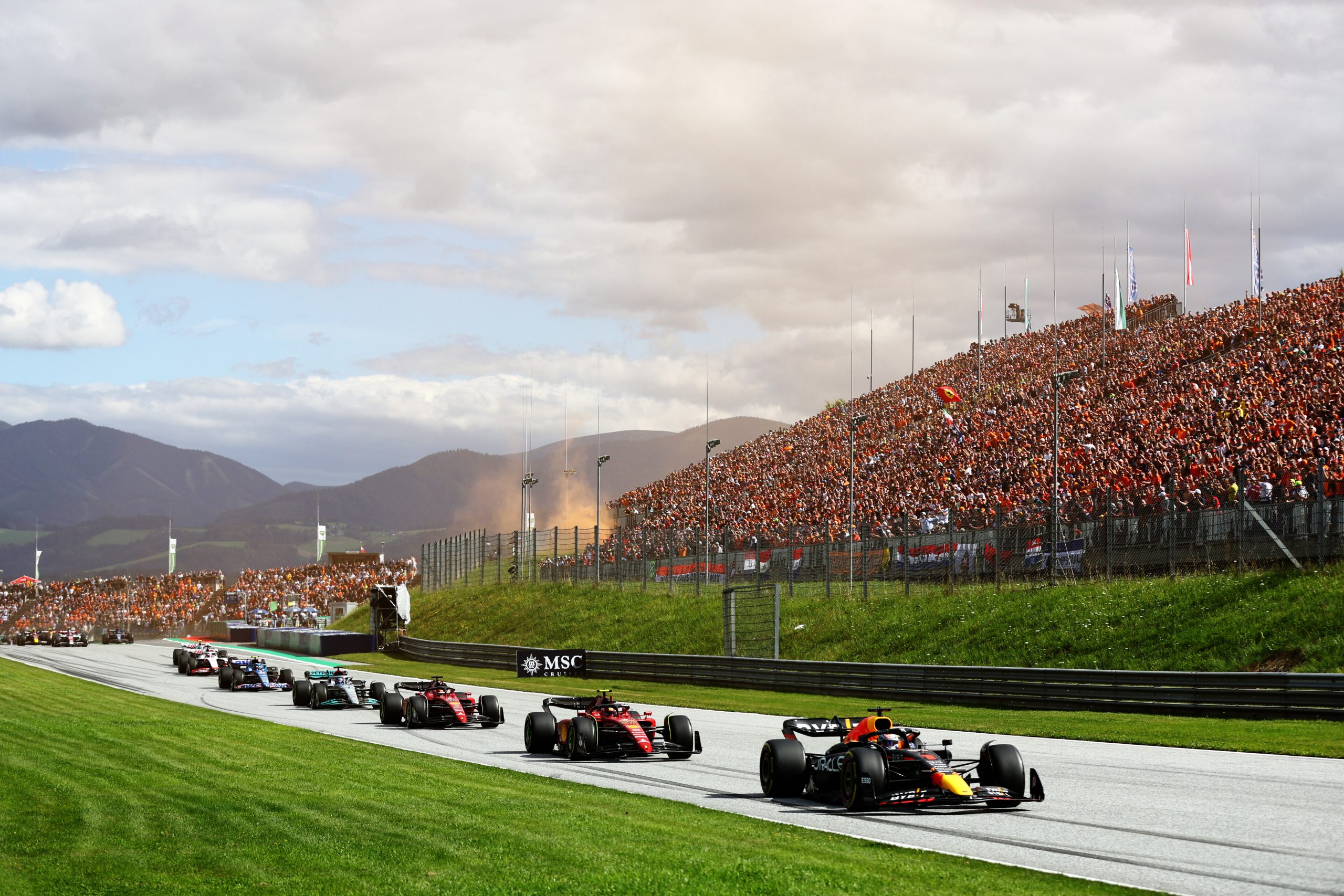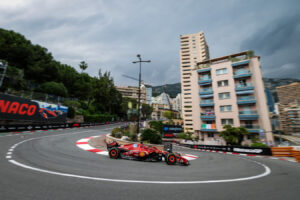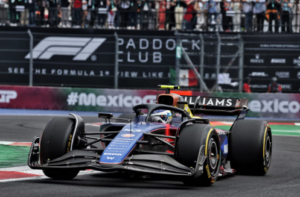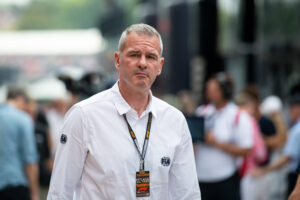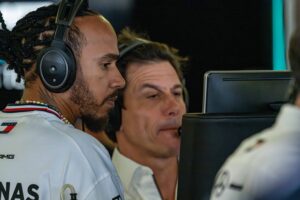2023 will see double the number of F1 Sprint Races, as they continue to lean in on providing more action throughout the weekend.
The 2022 season featured three F1 Sprint Races sessions at the Emilia Romagna, the Austrian Grand Prix, and the Sao Paulo Grand Prix. The FIA has confirmed that three more sprints will be added for the 2023 season, stating that the additions will be announced in due course. F1 CEO Stefano Domenicali, stated,
“The sprint provides action across three days with the drivers all fighting for something right from the start on Friday through to the main event on Sunday — adding more drama and excitement to the weekend. The feedback from the fans, teams, promoters, and partners has been very positive and the format is adding a new dimension to Formula 1, and we all want to ensure its success in the future.”
BREAKING: F1 Sprint confirmed to feature at six race weekends from 2023 onwards#F1 pic.twitter.com/94N96qsjaw
— Formula 1 (@F1) September 27, 2022
What is an F1 Sprint Race?
The Sprint Race is a mini version of the race held on Saturday. It lasts approximately 25-30 minutes and covers 100 kilometers (24 laps at the Brazilian Grand Prix). This format gives drivers the chance to go flat-out from start to finish without having to pit.
How does it work?
The Sprint Race is held on Saturday. The drivers start in the order in which they qualified the day before during the Friday qualifying session. The outcome of the Sprint then determines the starting order for the Sunday race. If a driver has mechanical issues or crashes out on Saturday, they will start from the back of the grid for the Grand Prix.
In a change from the first year, starting in 2022 the driver who has the fastest time in Friday’s qualifying will be credited with pole position in the record books, even though they may not start Sunday’s race from pole.
Sprint Race Weekend Format:
| Friday morning | 60-minute Free Practice 1 |
| Friday afternoon | Qualifying |
| Saturday morning | 60-minute Free Practice 2 |
| Saturday afternoon | Sprint Race |
| Sunday | Grand Prix |
Tire Rules
Teams are given 12 sets of tires during Sprint qualifying weekends instead of the standard 13. They are only allowed to use soft tires in qualifying unless the session is wet. But are allowed freedom of choice for both the Saturday Sprint Race and the Sunday Feature Event.
F1 Sprint Points
In 2021, points were only awarded to drivers who finish in the top three. The winner was awarded three points, two points to the runner-up, and one point to the third-placed driver.
In 2022, the Sprint’s scoring system has been modified to award points to the top eight finishers to encourage overtaking in the midfield. These points are reduced by one per position, with the winner getting eight points.
| 1st | 8 points |
| 2nd | 7 points |
| 3rd | 6 points |
| 4th | 5 points |
| 5th | 4 points |
| 6th | 3 points |
| 7th | 2 points |
| 8th | 1 point |
Who won the 2022 F1 Sprint Races?
This season, Max Verstappen has earned the maximum eight points in the first two Sprint races. He won at Austria by 1.6s ahead of Charles Leclerc and at Imola where he achieved his second Grand Slam in his career after getting the pole position, Sprint Race win, Grand Prix win, and the fastest lap.
What. A. Performance! ⭐️⭐️⭐️⭐️⭐️#ImolaGP @Max33Verstappen pic.twitter.com/RddD4nwQbJ
— Formula 1 (@F1) April 25, 2022
In the final Sprint Race of the year, Kevin Magnussen started from pole, and Lewis Hamilton once again charged through the field. But it was Mercedes’ George Russell who picked up his first win overtaking Max Verstappen and earning himself the top spot on the grid for Sunday’s Grand Prix.
2023 Sprint Venues Predictions
Although the locations for 2023 have not yet been revealed, we can make predictions about the potential venues. Taking into account the number of overtaking opportunities as well as spacing out the locations to avoid having two or three Sprint weekends in a row. Here is where we might see the event take place next season.
1. Bahrain International Circuit (March 3rd-5th)

Bahrain International Circuit features four long straights, each with a heavy braking zone and either a hairpin or a 90-degree corner, which makes it ideal for racing and overtaking.
Most pole positions: 3 – Lewis Hamilton (2015, 2016, 2020) & Sebastian Vettel (2010, 2012, 2018)
Most race wins: 5 – Lewis Hamilton (2014, 2015, 2019, 2020, 2021)
2. Shanghai International Circuit – China (April 14th-16th)

The Chinese Grand Prix will return to the F1 calendar in 2023 after a three-year absence. It is another great venue for overtaking, with one of the best chances being the hairpin of turn 14 after the 1.2km straight – one of the longest straights on the calendar.
In 2018, Red Bull’s Daniel Ricciardo made a string of thrilling overtaking moves on his way to a stunning win in Shanghai in what has gone down in history as an overtaking masterclass.
Most pole positions: 6 – Lewis Hamilton (2006, 2008, 2013, 2014, 2015, 2017)
Most race wins: 6 – Lewis Hamilton (2008, 2011, 2014, 2015, 2017, 2019)
3. Circuit de Spa-Francorchamps – Belgium (July 28th-30th)

The Circuit de Spa-Francorchamps is the longest and one of the most thrilling, adrenaline-inducing circuits on the F1 calendar. The iconic circuit is one of the ultimate tests of a driver with the incredible fall and rise of the famous Eau Rouge and Raidillon stretches that require lots of bravery.
Lewis Hamilton described Eau Rouge best: “When you get to the bottom of it, your insides drop. And then when you get to the top, they come back up and it feels like everything will come out of your mouth – quite a feeling when you’re going at 200 mph.”
Most pole positions: 6 – Lewis Hamilton (2008, 2013, 2015, 2017, 2018, 2020)
Most race wins: 6 – Michael Schumacher (1992, 1995, 1996, 1997, 2001, 2002)
4. Autodromo Nazionale Monza – Italy (September 1st-3rd)

Monza is one of Formula 1’s most iconic circuits. It is an old-school track that holds the record for hosting the most Grands Prix with 72 events. The circuit has been on the calendar in every single season except in 1980, when renovation works at Monza saw the Italian Grand Prix move to Imola.
Autodromo Nazionale Monza is one of the fastest circuits featuring very long straights that are broken up by chicanes and slow corners. Minimal downforce is needed to optimize those straights. However, they also require a well-balanced aerodynamic package to produce sufficient downforce when braking. The average speed is 164mph (264km/h) and the top speed is 225mph (362km/h), with 84% of the lap being on full throttle. It’s called ‘Temple of Speed’ for a reason!
Most pole positions: 7 – Lewis Hamilton (2009, 2012, 2014, 2015, 2016, 2017, 2020)
Most race wins: 5 – Lewis Hamilton (2012, 2014, 2015, 2017, 2018) & Michael Schumacher (1996, 1998, 2000, 2003, 2006)
DID YOU KNOW? Lewis Hamilton broke Monza’s track record in 2020 with the fastest qualifying lap in Formula 1 history with a time of 1:18.887.
5. Circuit of The Americas (October 20th-22nd)

COTA has been a part of the Formula 1 calendar since 2012 and has quickly become one of the most iconic circuits in the sport. It offers drivers challenges and overtaking opportunities starting with the hairpin of turn 1, and the slow left-hand corner at turn 12 where the cars brake heavily from over 200mph after a long straight, making it a prime overtaking spot in the circuit.
Most pole positions: 3 – Lewis Hamilton (2016, 2017, 2018)
Most race wins: 5 – Lewis Hamilton (2012, 2014, 2015, 2016, 2017)
6. Autódromo José Carlos Pace – Brazil (November 3rd-5th)

Interlagos is regarded as one of the most challenging and thrilling circuits on the F1 calendar. It makes sense to be selected in 2023 because it is the only venue selected to host sprints for both the 2021 and 2022 seasons. The track runs anti-clockwise and has a bit of everything – low speed, high speed, and plenty of ideal overtaking spots such as turns 1 and 2, “Senna S” curve at the start of the lap before turn 3 “Curva Du Sol”, and under braking for turn 4, “Descida do Lago”, at the end of the back straight.
Another spot that has also seen passing action in the past is Junçao at turn 12. However, doing so requires a lot of bravery from drivers.
Most pole positions: 3 – Lewis Hamilton (2012, 2016, 2018), Felipe Massa (2006, 2007, 2008), Rubens Barrichello (2003, 2004, 2009), Mika Häkkinen (1998, 1999, 2000), & Ayrton Senna (1990, 1991, 1994)
Most race wins: 4 – Michael Schumacher (1994, 1995, 2000, 2002), 3 – Lewis Hamilton (2016, 2018, 2021) & Sebastian Vettel, 3 (2010, 2013, 2017)
DID YOU KNOW? Lewis Hamilton overtook Timo Glock at Junçao on the final lap of the 2008 season finale in Brazil, winning his first world title and giving us the iconic “IS THAT GLOCK?” moment.
LAP 71/71
All together now… "IS THAT GLOCK?!" 😱
Un. Believable. Vettel and Hamilton pass Glock just metres from the line
Hamilton finishes P5 and is the 2008 World Champion! 🏆#Brazil08Flashback 🇧🇷 #F1 pic.twitter.com/MHAKd42uhd
— Formula 1 (@F1) November 2, 2018
Which venues do you think will host the six F1 Sprint Races in 2023? Join the LWOS community and share your opinion in the comments section.


